Sri Lanka: Fire-hit Tanker Towed Further Offshore as Wind Picks Up
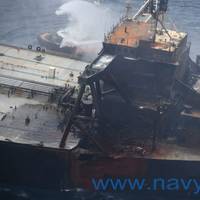
The Sri Lankan navy has towed a fire-stricken supertanker further out to sea to keep it off the coast of the Indian Ocean island after the wind picked up strength and changed direction, a spokesman said on Thursday.The tanker, loaded with 2 million barrels oil, was 50 nautical miles (95 km) from the east coast and moving in a northerly direction, the navy spokesman, Indika de Silva, said. Earlier, it had been headed southwest.The stricken vessel has raised fears of an environmental disaster…
What Did Scientists Learn from Deepwater Horizon?
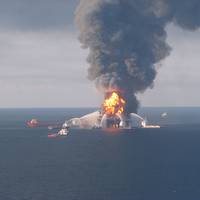
April 20, 2020, marks the tenth anniversary of the Deepwater Horizon rig explosion, the offshore oil industry's biggest environmental disaster.Eleven people died, 17 others were injured, Transocean's drilling rig sank, and an incident caused more than four million barrels of oil to spill into the U.S. Gulf of Mexico from the BP-operated Macondo well which spewed oil into the ocean for 87 days before it was finally capped.In a review paper published in the journal Nature Reviews Earth & Environment…
New Oil Spill Tech Solutions Put to the Test
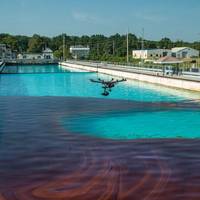
No two oil spill response operations are the same. Each can present new and even tougher challenges for spill responders as they detect, contain and recover spilled oil. Diverse aspects affecting oil spill response operations can be the physical environment, spill monitoring, use of chemical dispersants, and the availability of proper technology for the situation.Some challenges have been met through research and technology development of techniques for dealing with spills. However…
Tech File: Fire Boom for the US' Worst Oil Spill

On April 20, 2010, the Deepwater Horizon mobile offshore drilling platform was destroyed as a result of a catastrophic blowout of the Macondo 252 well in the Gulf of Mexico. The blowout resulted in a continuous discharge of approximately 3.19 million barrels of oil over three months covering approximately 30,000 square miles of the Gulf. It was the worst accidental oil spill in U.S. history. Due to the massive amount of oil being spewed into the Gulf, three aggressive oil removal methods were authorized: mechanical skimming, dispersant application and controlled burns.
Oil-hungry Bacteria Could Clean Up Next Big Oil Spill
Heriot-Watt scientists have cracked the genetic code of the marine bacteria which helped ‘eat’ the oil spilled in the Deepwater Horizon disaster, information which could aid clean-up efforts for any future major spill. Dr Tony Gutierrez, Associate Professor of Microbiology at Heriot-Watt, was in the US at the time of the disaster and was able to perform experiments with samples from oil-contaminated waters of the Gulf of Mexico shortly after the spill occurred, samples that contained key species of bacteria that fed on the oil. Experiments with the samples revealed that certain bacteria had thrived on the oil that gushed into the Gulf, devouring the oil as a preferred food source.
Oil Spill Response: Responder Immunity Analyzed
On February 16, 2016, Judge Carl J. Barbier of the United States District Court for the Eastern District of Louisiana granted summary judgment in favor of the various commercial oil spill response companies involved in the federal government’s response to the Deepwater Horizon (DWH) oil spill in the Gulf of Mexico in 2010. The responders had been sued by numerous individuals claiming that they incurred damages, including personal injury and/or medical monitoring claims for exposure or other injury resulting from the post-explosion and spill clean-up efforts. Plaintiffs fell into five categories: (1) crew involved in the Vessels of Opportunity (VoO) program…
Insights: Steven Candito, President & CEO, NRC

This month’s featured INSIGHTS executive is Steven A. Candito, President and CEO of the National Response Corporation (NRC). He has extensive experience with OPA 90 compliance issues with particular focus on vessel owner and insurance matters. Candito was previously an attorney with Haight Gardner Poor & Havens, specializing in maritime litigation and environmental law. He also served as a marine engineer aboard Exxon USA’s domestic tanker fleet from 1980 to 1985. Candito is a graduate of Hofstra University School of Law and the United States Merchant Marine Academy.
US, ATP-IP Reach Settlement over Unauthorized Oil Discharges
Under a settlement agreement with the United States, ATP Infrastructure Partners, LP (ATP-IP) will pay a $1 million civil penalty and perform corrective measures to resolve claims by the U.S. under the Clean Water Act and the Outer Continental Shelf Lands Act (OCSLA) of unauthorized discharges of oil and chemicals from an oil platform into the Gulf of Mexico, announced the U.S. Environmental Protection Agency (EPA), the Department of Justice, and the Department of the Interior’s Bureau of Safety and Environmental Enforcement (BSEE). This is the first joint judicial enforcement action involving EPA and BSEE claims in response to alleged violations of both the Clean Water Act and OCSLA. The United States’ complaint, which was filed in February 2013, in the U.S.
NRL Models Deepwater Horizon Oil Spill
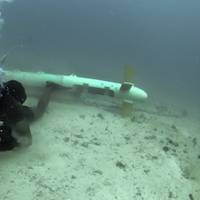
Dr. Jason Jolliff is an oceanographer with the U.S. Naval Research Laboratory (NRL). "The emphasis here," he says, "is on developing models of the ocean environment to help the naval warfighter." His most recent paper, published in Ocean Modeling (March 2014), shows NRL can also forecast where oil will go following a major spill. "If you're going to do forecasting," he says, "you have to get the ocean circulation correct. It's fundamental to all else." Jolliff plugged the distribution…
Responder Immunity

Not long after specialized tank ships were developed, enabling the carriage of large quantities of oil and petroleum products, groundings, collisions, and other casualties started causing significant oil spills. In those early days, there was no financial incentive to clean up such spills. To the extent that there was a response, it was often by Good Samaritans, a term derived from a parable found in the Bible at Luke 10:25-37 about a stranger from Samaria who, with no thought of reward, came to the aid of an injured robbery victim in Judah.
The Challenge of Responding to Arctic Oil Spills
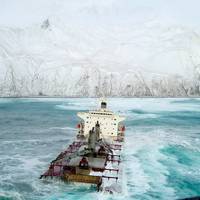
The U.S. Arctic is no longer the place it once was. The environment north of the Yukon River and beyond the vast Brooks Range is warming rapidly. National Oceanic and Atmospheric Administration (NOAA) scientists predict that by 2020-2030, the Arctic could be nearly free of sea ice during the summer. Open seas will expand opportunities for maritime transportation, tourism, and oil and gas exploration in the region. But as a warming Arctic opens up vast opportunities for commerce and development…
Gulf Oil Spill – Conservationists Sue for Dispersant Harm
Conservation groups have sued the Environmental Protection Agency and the U.S. Coast Guard for authorizing toxic oil dispersants without ensuring that these chemicals would not harm endangered species or their habitats. The groups want the EPA to immediately study the effects of dispersants on endangered and threatened species in all U.S. waters, including threatened and endangered whales, sea turtles, salmon and seabirds in the Pacific and polar bears and walruses in the Arctic. “If chemical dispersants are going to be used after an oil spill, we have to know whether they’ll hurt or kill whales, sea turtles and other wildlife.
EPA Statement: Use of Oil Dispersant on the Oil Spill
At the legislative hearing on the use of dispersants in the BP oil spill, Lisa P. Jackson, Administrator of the U.S. Chairman Mikulski, Ranking Member Shelby and Members of the Subcommittee, thank you for the opportunity to testify on the role of the U.S. Environmental Protection Agency (EPA) in the Deepwater Horizon BP oil spill response. My testimony today will provide you with an overview of EPA’s role and activities in the affected Gulf Coast region following the April 20, 2010 Deepwater Horizon mobile offshore drilling unit explosion and resulting oil spill as well as a summary of our primary environmental activities, including dispersant use, waste management, and beach cleanup.
Ballast Water Treatment Through Biodispersion
The process of bioremediation of waste oil through patented biodispersion technology, consists of a breakthrough in ballast water treatment, which has been discovered via research based on the evaluation of SpillRemed (Marine), which was developed on the basis of biodispersion technology for remediation of bilge water on boats and ships in an effort to develop an environment friendly solution to the problem of operational discharges by ships. A study was conducted on board cruise ships equipped with oil water separators. SpillRemed (Marine) is considered a suitable replacement to chemical dispersants. Although in volumes as large as found on such ships…
Galapagos’ Latest Natural Wonder … Jessica?
It seems that the stricken oil tanker that fouled Charles Darwin's Galapagos island paradise cannot be moved and is set to become an artificial reef, teeming with fish and home to seals and exotic birds, the U.S. Coast Guard said on Sunday. The Ecuadorean Navy had hoped to clear the semi-submerged "Jessica" from the tiny harbor of San Cristobal island where it ran aground last week, leaking the bulk of its 240,000 gallon fuel cargo into the archipelago's pristine waters. But while the wreck may be an eyesore in the prophetically named "Shipwreck Bay," in time it will become an artificial reef and a new habitat for marine life, Coast Guard salvage chief Ed Stanton said. "Seals will start living on it, birds will begin perching on it. It has already attracted fish," Stanton said.
Biodispersion Is Viable Option for Floating Oil Treatment
It is estimated that as much as 30,000 tons of oil enter the seas every year, with about 62 percent coming from the industrial sector and 22 percent from ships. The marine industry, in particular, has worked fastidiously over the past 10 years - driven in large part by OPA 90 and other regional, national and international legislative measures - to ensure that oil never enters water. In order to clean up these aqueous environments, there is a need for a technology that is non-invasive, less labor intensive and cost effective. Any solution should: Be fast acting - remediation should take place in days or hours and not in months; not disturb the existing ecosystem…
Are They In Synch?
Recent spills in the Gulf of Mexico have demonstrated how tried and true oil spill recovery has combined with chemical dispersant technology to combat oil spills. On October 1, 1998, when a slick tracked to a crude oil pipeline leak off Louisiana's Gulf Coast was detected, the ready forces of oil responders were immediately activated. Along with a small armada of oil spill response vessels (OSRVs) hurrying to the site of the spill traced to a Chevron pipeline, a plane loaded with Corexit 9527 dispersant was deployed to shrink the growing oil slick estimated to be 37 kilometers long. By day two of the spill, dispersant operations had successfully shrunk the slick enabling OSRVs to contain the oil and finish the cleanup job.
Dispersants
Government and industry agree chemical dispersants can be combined with mechanical recovery to shorten clean up time and reduce the cost of cleaning up spills. Recent spills in the Gulf of Mexico have demonstrated the use of dispersants - when used early in the response of a spill - can help minimize the size of the spill. This enables oil spill response vessels to position mechanical recovery systems, to complete the removal process, while shortening the average cleanup time of a spill.
Planning, Not Technology, Is Key To Spill Avoidance
Good planning, and not super high technology is the key to fighting tanker oil spills, Ian White, managing director of London-based International Tanker Owners Pollution Federation Ltd. said last week. "There are technological limitations as to what you can do (to control oil spills). He said in a speech most spills from tankers occurred during routine operations such as loading, discharging and bunkering. But bigger spills involving more than 700 tons have resulted from collisions and groundings, he said. "You can use booms and skimmers to concentrate the oil, pick it up and remove it, but it tends to be quite inefficient, especially if the weather is not good," White said.





